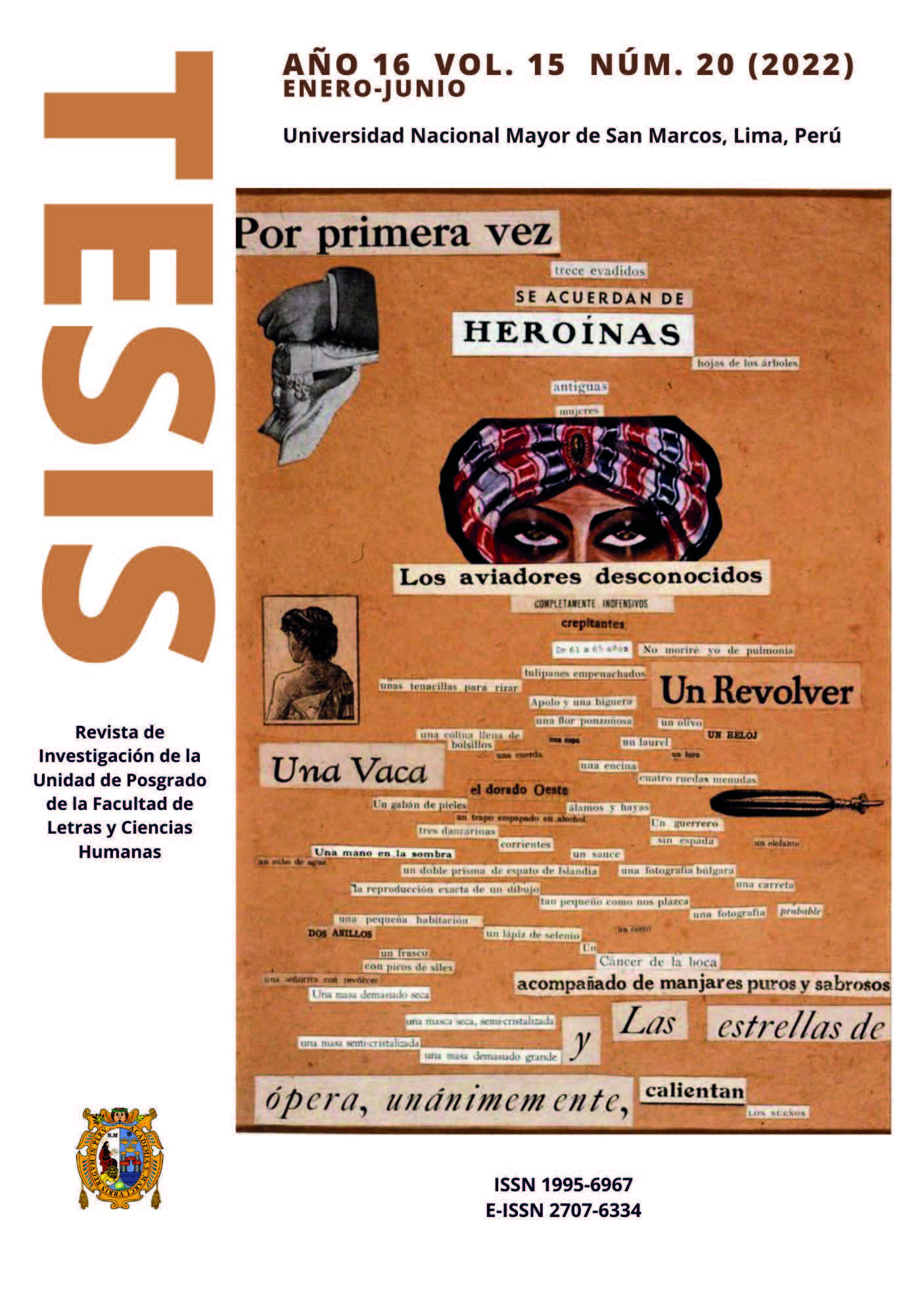Satanic rituals and industrial cannibalism. The darkest horror in Tarik Carson
DOI:
https://doi.org/10.15381/tesis.v15i20.23521Keywords:
satanism, cannibalism, horror, society, Tarik CarsonAbstract
This article seeks to show that side of the work of the Uruguayan writer Tarik Carson da Silva that focuses on issues such as the esoteric, the satanic and cannibalism, the latter linked especially in its relationship with the commercial industrialization of the human body. For this, the work will make reference to five stories from El hombre olvidado: “Ogedinrof ”, “Interferencias sobre Pérez Loid”, “Demasiado humanos”, “El hombre olvidado” and “Un sueño viejo y oculto”. The horror produced by the ritual control and abuse of bodies, corporal punishment, and the killing for consumption are themes that are repeated in El hombre olvidado (1973), sometimes related to dystopian science fiction literature, others with fantasy or horror literature. In El hombre olvidado the author seems to unleash an attempt to show, in a double movement, the weakness of human and also collide with the human race itself. At the same time the stories seeks: a) to question its constitutive principles; and b) doubt their future possibilities as a species. These questions raise doubts on a whole system of values that, from fiction, show the most terrrible face of the human “animal”.
References
Aínsa, F. (2006). Del canon a la periferia. Encuentros y transgresiones en la literatura uruguaya. www.biblioteca.org.ar/libros/132463.pdf
Antón, G. y Damiano, F. (2010). El malestar de los cuerpos. En G. Forte y V. Pérez (comps.), El cuerpo territorio del poder. Colectivo Ediciones.
Campra, R. (2008). Territorios de la ficción. Lo fantástico. Renacimiento.
Carroll, N. (1990). The philosophy of horror, or Paradoxes of the heart. Routledge.
Constant vzw (2004). Suturas y fragmentos. Cuerpos y territorios en la ciencia ficción. Universidad Internacional de Andalucía.
Damonte, M. (2020). La trampa de la continuidad-contigüidad y la crisis del espejo. Dos cuentos de Cordwainer Smith y Tarik Carson. En C. Paolini, M. Damonte y V. Frade (eds.), Inmediaciones de lo distante. Estudios sobre ciencia ficción en la literatura americana. Tenso Diagonal, Díaz Grey.
Damonte, M. (2019). Tarik Carson. Una teoría de la amenaza. Narrativa de lo mutante, sabotaje humano y poética de la invasión. Tenso Diagonal, Díaz Grey.
Da Silva, T. C. (1973). El hombre olvidado. Géminis.
De Andrade, O. (2008). Escritos antropófagos. Corregidor.
Dei, D. (2008). Lógica de la distopía. Prometeo.
Eagleton, T. (2010). Sobre el mal. Península.
Franco, F. (2008). El fenómeno de las sectas satánicas en la ciudad de Mérida (1991). Un recuento a través de las imágenes en los periódicos. Presente y Pasado, 25, 167-178.
González Grueso, F. (2017). El horror en la literatura. Actio Nova. Revista de Teoría de la Literatura y Literatura Comparada, 1, 27-50.
Hegel, G. W. F. (1966). La fenomenología del espíritu. Fondo de Cultura Económica.
Kristeva, J. (2006). Poderes de la perversión. Ensayos sobre Férdinan Louis Céline. Siglo XXI.
López Keller, E. (1991). Distopía. Otro final de la Utopía. Reis, 55, 7-23.
Lugmayr, M. (2008). La larga sombra de Hitler: una contribución al debate actual sobre la eutanasia. Cuadernos de Bioética, XIX(1), 147-152.
Moraña, M. (2017). El monstruo como máquina de guerra. Vervuert.
Saldías, G. (2015). Teoría de lo distópico y su presencia en la narrativa tardofranquista española (1965-1975). [Tesis doctoral en Teoría de la Literatura y Literatura Comparada, Universitat Autónoma de Barcelona]. https://tdx.cat/handle/10803/295707
Sibilia, P. (2009). El hombre postorgánico. Fondo de Cultura Económica.
Suvin, D. (1984). Metamorfosis de la ciencia ficción. Fondo de Cultura Económica.
Downloads
Published
Issue
Section
License
Copyright (c) 2022 Marcelo Damonte Luzi

This work is licensed under a Creative Commons Attribution 4.0 International License.
THE AUTHORS RETAIN THEIR RIGHTS:
(a) The authors retain their trademark and patent rights, and also on any process or procedure described in the article.
(b) The authors retain the right to share, copy, distribute, execute and publicly communicate the article published in Tesis (Lima) (in example, depositing the article in an institutional repository or publish it in a book), with recognition of its initial publication in the Tesis (Lima).
(c) The authors retain the right to make a later publication of their work, to use the article or any part of it (for example: a compilation of their works, notes for conferences, thesis, or for a book), provided that they indicate the source of publication (authors of the work, magazine, volume, number and date).














